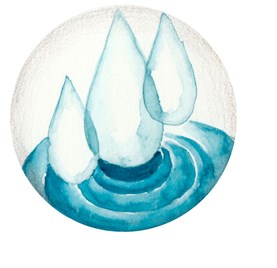
There's history here.
Once upon a time, not so long ago, the feeling amongst experts in healthcare-associated infection (HCAI) was that contaminated surfaces contributed little to the transmission of the pathogens that can cause HCAI, and that other potential transmission routes should be the focus. Over the past 15-20 years, this position has changed, and there is now broad recognition of the role of contaminated surfaces in the transmission of key pathogens that cause HCAI including C. difficile, MRSA, VRE, Acinetobacter, Klebsiella, and yes, respiratory viruses too! The extent to which contaminated surfaces play a role in transmission depends on a number of factors, including patient factors such as shedding and individual susceptibility, the organism, the surfaces involved, and the environmental conditions.
But there are times when contaminated surfaces are thought to be the predominant transmission route for some pathogens. Influenza is an interesting case. As a respiratory virus, under most circumstances you may not be surprised to read that respiratory droplets transmitted using the air as the vector is the most common route of transmission. But in some settings, contaminated surfaces can be a more important route. Taken together, this means that surfaces in hospitals should be kept clean at all times, disinfected using an appropriate method where there is a risk of contaminated with a pathogen, and surfaces should be chosen with cleaning and disinfection in mind.

Human beings don’t do so well without water. And, as you know, we are more aqueous than we are anything else.
Hospital water is always a complex ecosystem. Most of the time, micro-organisms residing in hospital water systems don’t do anybody any harm. But occasionally, exposure to hospital water can be problematic when the levels of certain organisms rise, susceptible patients or others are in close proximity, and water is able to get to a part of the body where the organisms it harbours cause issues. A good example of this is the management of Pseudomonas in ‘augmented care’ areas. In the UK, national guidelines recommend special precautions in clinical areas that are considered ‘augmented’. There’s no fixed definition of what ‘augmented care’ is, but the guidance suggests that critical care and some other clinical areas should be managed as augmented. And if this goes wrong? You could end up with outbreaks of Pseudomonas infection in vulnerable patient populations. The most infamous example of this was related outbreaks of Pseudomonas affecting neonates in various Belfast units in 2012. There was much to learn from these incidents, and I think it’s fair to say that neonatal care is safer now due to the changes that have been implemented.

If we can’t survive for long without water, we can survive for even less time without air! Whilst most of the organisms that we breathe in do us no harm, and no doubt help to feed a healthy respiratory microflora, just occasionally air does us no favours.
Before COVID-19 came along, we were debating the role of various droplet sizes in the transmission of respiratory viruses. But clearly, the pandemic has taught us a lot about how little we know around the transmission dynamics of respiratory viruses in the air! And then there are operating theatres and other areas requiring specialist ventilation, how to manage high-consequence infectious diseases, and infectious diseases that we know are spread via the airborne route most of the time. Taken together, there’s a lot to be done to provide safe air in our hospitals. A recent new update of the national guidance around specialist ventilation in hospitals includes a new requirement for a 'Ventilation Safety Group', analogous to the 'Water Safety Group', which will help organisations to keep a track on where they are with managing safe specialist ventilation.
So, if I could build a hospital from scratch, these would be some design features that I would be keen to see:
There’s always more that we can do to 'design out' infection that can be linked to contaminated surfaces, water, or air. And thinking about how we would design a hospital of the future is a good way to think about what can be improved in the here and now.
What would you like to see in our hospital of the future?